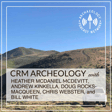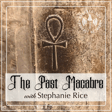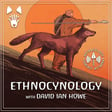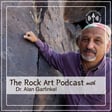
Stonehenge and the Winter Solstice with Professor Timothy Darvill - BTT 1
In this special episode of Behind the Trowel Podcast, I'm joined by the late Professor Timothy Darvill OBE, a leading expert on Stonehenge and prehistoric Britai`n. This conversation, originally recorded during a 2020 YouTube live show (Archaeologists in Quarantine), explores the significance of Stonehenge during the Winter Solstice and its evolution as a sacred, multi-purpose monument.
Professor Darvill shares fascinating insights about:
🪨 The origins of Stonehenge and its bluestones, which he believed to hold healing properties.
🌄 The importance of the Winter Solstice sunset in the Neolithic calendar.
📜 How Stonehenge connects to local and global prehistoric landscapes.
You can watch a live stream from Stonehenge on English Heritage's YouTube channel: https://www.youtube.com/EnglishHeritage
This episode also serves as a tribute to Professor Darvill, who passed away in October 2024. I reflect on his remarkable career, his mentorship, and his profound contributions to archaeology, including his pioneering work at Stonehenge and his role in shaping the next generation of archaeologists.
Join us to celebrate the life and legacy of an extraordinary archaeologist while uncovering the mysteries of Stonehenge at its most magical time of year.
🎧 Listen now wherever you get your podcasts!
Watch the original YouTube live here: https://www.youtube.com/live/4dGPFAJgo7o?si=yzXy0z9c4bfI1X3K
Links:
Stay up-to-date with Behind The Trowel podcast by following your host, Natasha Billson, on:
http://instagram.com/tash_archaeo
http://tiktok.com/@tash_archaeo










